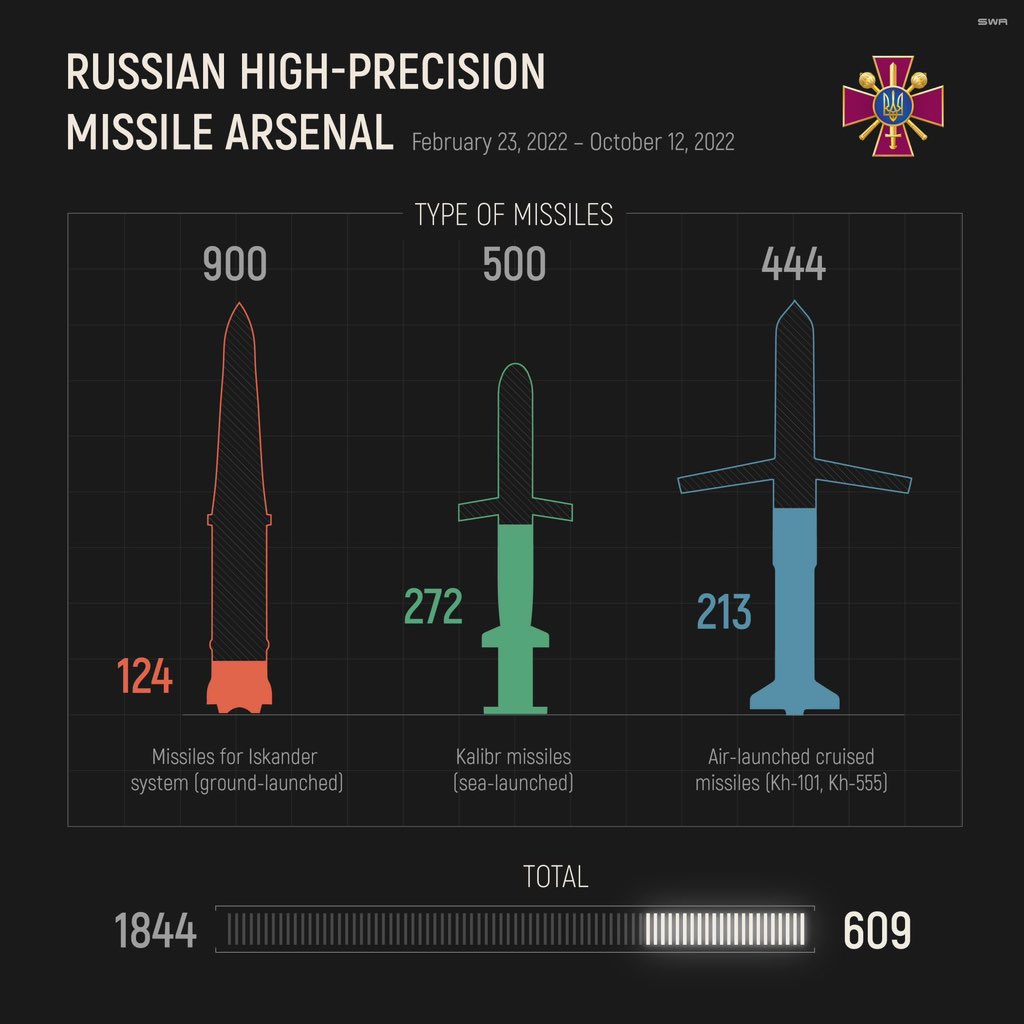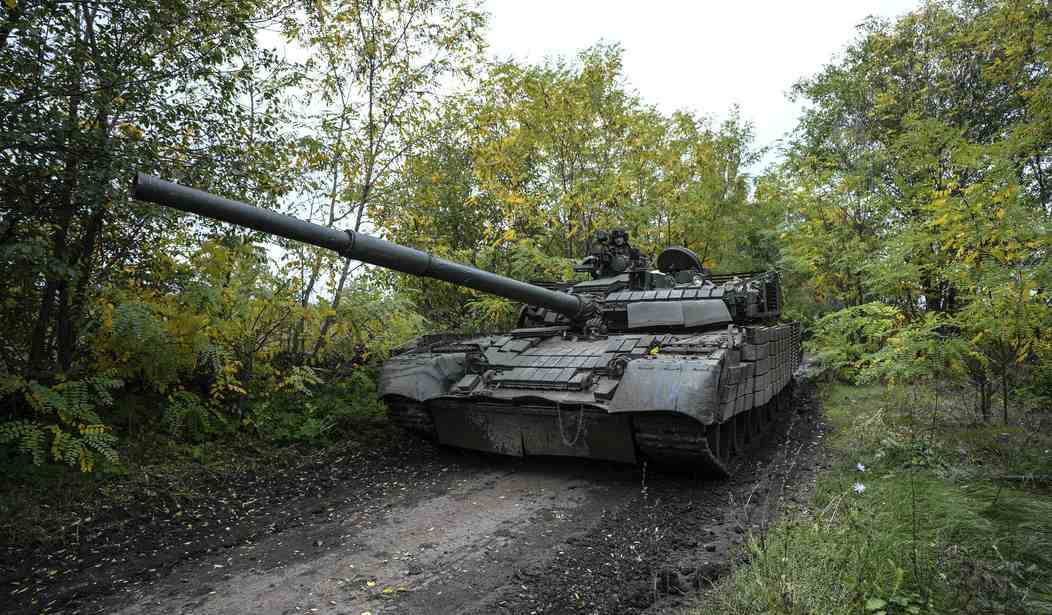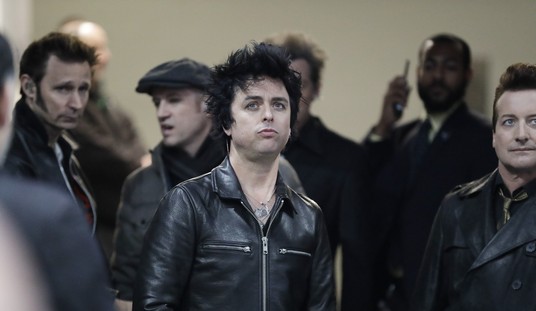This is Day 267 of Vladimir Putin’s glorious blitz on Kiev. Somewhere, the parade uniforms and musical instruments are packed away but ready for immediate use.
There has been little activity since the last update (Putin’s War, Week 37. Kherson Liberated and Winter Comes). The weather is transitioning from rain to snow. The temperatures are slowly dropping, and soon the soggy morass of the rasputitsa will freeze, and maneuver will be possible to the side with the discipline to move away from the campfire and fight.
Politico-Strategic Level
G20 Meeting
The G20, or the G19 plus Russia as some have referred to it, had its 2022 meeting in Bali. Vladimir Putin did not attend; he sent his squeegee man, Sergey Lavrov, in his stead. This is a critical event in the political history of Putin’s War in Ukraine. Rather than face his contemporaries and hear a televised speech from Ukrainian President Volodymyr Zelensky, Putin decided to stay home. It was probably just as well. The G20, a forum where Russia does not have a veto, demanded a “full, unconditional Russian withdrawal from the territory of Ukraine.”
G20 adopted a declaration demanding “full, unconditional Russian withdrawal from the territory of Ukraine”. Nothing binding but a first step to a united statement to Russia. pic.twitter.com/YLPLsC3o5H
— NOËL 🇪🇺 🇺🇦 (@NOELreports) November 16, 2022
United Nations
Fifty nations co-sponsored a resolution demanding that Russia pay reparations for Putin’s War. The resolution passed by a vote of 90-14 with 73 abstentions. Like most things coming out of the UN, this was symbolic, but it does show who has aligned itself with Russia. It also passed in a forum where neither Russia nor China has a veto.
The UN General Assembly supported the resolution on the payment of reparations by Russia to Ukraine
The photo shows a list of countries that voted "for" and "against" the resolution on reparations to Ukraine pic.twitter.com/dMAUkxqVfd
— Russia Ukraine Conflict (@Russiaconflict) November 14, 2022
How Do You Integrate Into NATO Without Integrating Into NATO?
Early in the second month of the war, I wrote about how Putin’s War was moving Ukraine into NATO in a de facto if not de jure way; see Ukraine Has Joined NATO Whether Russia Likes It or Not, and More Are Yet to Follow. By adopting weapons using NATO ammunition and organizing and operating along a NATO model, Ukraine was joining NATO. Now another step has been taken. Ukraine and the Czech Republic will jointly manufacture weapons and ammunition.
Ukraine & Czechia will create joint defense cluster
The creation of a defense cluster involves the production of military equipment, an increase in the production of ammunition of various calibers.https://t.co/YbBVkcgo7U
— Euromaidan Press (@EuromaidanPress) November 11, 2022
Belarus
I’ve posted several times on the tensions between Belarus and Ukraine (Belarus Prepares to Join Russia’s Unprovoked Assault on Ukraine and Belarus Withdraws Ambassador as Ukraine Warns of Impending Attack From Belarus). In a nutshell, Belarus is a political client state of Russia. The population, though, is not terribly pro-Russian, and the war in Ukraine is awakening Belarusian nationalism. That nationalism has manifested itself in the form of sabotage: Belarus Rail Lines Carrying Trains With Supplies for the Russian Army Are Being Hit by Sabotage Attacks. Belarus has allowed Russia to conduct air and missile strikes from within Belarus. Early in the war, Russian troops were allowed to transit through Belarus to attack Ukraine. Since the air has gone out of Putin’s balloon, so to speak, Belarusian strongman Aleksandr Lukashenko has walked a tightrope. He talks about joining the fight but is not doing much to make that a reality.
Currently, Belarus is training Russian mobiks and stripping its own units of tanks and personnel carriers for transfer to Russia.
The net effect is that Ukrainian troops, staff attention, and intelligence assets are devoted to defending Ukraine from an invasion from Belarus. Of course, this will probably never happen, but it is also a risk that can’t be taken.
Ukraine has now taken the next logical step. It is turning the Ukraine-Belarus frontier into a barrier. This will not stop a determined attack, but it will make the effort more challenging.
The Ukrainian Ministry of Internal Affairs has announced that they will be building a Concrete Reinforced Wall along the Border with Belarus in order to prevent Russian/Belarusian Sabotage Groups from crossing into the Country. pic.twitter.com/WuUmWOSBq1
— OSINTdefender (@sentdefender) November 12, 2022
Ukraine-Belarus border situation near #Rivne. Recently the Belarussian border committee reported that Ukraine had mined the whole border area and blew all bridges to Belarus. pic.twitter.com/LvJyefqNcm
— NOËL 🇪🇺 🇺🇦 (@NOELreports) November 16, 2022
Germany Nationalized Gazprom Subsidiary
One of the many things the war in Ukraine has accomplished is convincing Europe, particularly Germany, that President Trump was correct about the dangers of being dependent upon Russia for energy. This disconnection of Europe from Russia will remain long after the war in Ukraine ends.
Germany has received the go-ahead to nationalize energy giant SEFE, formerly the German arm of Russia's Gazprom.https://t.co/CWAB9N4QVi
— POLITICOEurope (@POLITICOEurope) November 12, 2022
Russian Missile Manufacturer Suffers Major Fire
While I’m not claiming enemy action on this, I don’t think it matters a whole lot. Russia is in a huge crunch on precision munitions.
IT BEGINS: @ColbyBadhwar reports on a fire in the Podolsky Electromechanical Plant outside of Moscow. The facility manufactures components for RU missiles, from Strela-10 MANAPDS, to S-400s air defense systems to Topol-M ICBMs. RU weapons production will be further impacted. https://t.co/8rBXDknxp7 pic.twitter.com/ilECS7HxhK
— Chuck Pfarrer | Indications & Warnings | (@ChuckPfarrer) November 14, 2022
Their manufacturing capacity was already inadequate to match the burn rate. This is one of the best estimates of Russian precision missile inventories.

Any hiccup in manufacturing will have a near-term impact on military operations. Perhaps an impact of strategic importance. We don’t know at what level the Russian defense staff will decide they can’t afford to use more of the weapons, but we know that number exists.
Russia’s Campaign Against Ukrainian Civilians
Russia has been targeting Ukrainian electrical generation, transmission, and distribution infrastructure for the last month. The stated purpose of this is to break the will of the Ukrainian people by depriving them of electricity, heat, and water during the winter. The recent influx of Western air defense systems has made the waves of Russian missile attacks less damaging than they could have been; about 80% of all incoming missiles are intercepted. But the attacks that succeed are wearing down Ukraine’s electrical infrastructure. I don’t think this will achieve its goal any more than the London Blitz or the bombing of German cities; it will only end with more anti-aircraft systems and more effective use of night interceptors.
Russia is fighting civilian population in Ukraine, missile strikes with 0 military necessity against infrastructure objects. Pure terrorism pic.twitter.com/MMLQKn2S7b
— Liveuamap (@Liveuamap) November 15, 2022
Kiev under massive attack pic.twitter.com/heLBnCAvJJ
— Russian Market (@runews) November 15, 2022
Even successful interception has a price. You can see the warhead section separate from the engine upon impact in these two videos. That warhead is probably going to detonate when it hits the ground. It won’t hit a transformer station, but it might hit homes.
Amazing video of Ukrainian air defense intercepting a Russian cruise missile. pic.twitter.com/51iN9Ko4WV
— Colby Badhwar 🇨🇦🇬🇧 (@ColbyBadhwar) November 15, 2022
Russian cruise missile clearly intercepted over somewhere in Ukraine. pic.twitter.com/X1eBQRrMis
— Clash Report (@clashreport) November 17, 2022
Of course, sometimes the defensive missiles don’t perform flawlessly, as we saw this week when a Ukrainian S-300 surface-to-air missile exploded on a Polish farm, killing two civilians; Preliminary Investigation Indicates Ukrainian Missile Landed in Poland.
Operational Level
There has been very little movement on the ground over the last week. I’m going to dispense with the operational maps because I think the number of people who believe the Russian Army is advancing victoriously can be shoved, along with their strait jacket, into a phone booth.
New Weapons
Israeli GAIA Amir MRAP
This was a huge shock to everyone, especially the Israelis.
#Ukraine: To make today even more notable- for the first time ever Ukrainian forces were spotted using Israeli-made military vehicles! Here we see an Israeli GAIA Amir MRAP 🇮🇱, currently deployed in #Kherson Oblast.
There is no information how these vehicles appeared in Ukraine. pic.twitter.com/yhoAH8J30M
— 🇺🇦 Ukraine Weapons Tracker (@UAWeapons) November 11, 2022
Apparently, someone who bought the MRAPs from Israel passed them along to Ukraine despite an assurance they would have signed pledging not to transfer the vehicles without the consent of the Israeli government.
Airbus H125 Helicopters
The H125 is a multi-role helicopter. There are armed versions floating around, but its main application seems to be more toward civil aviation. It has some special forces utility, but I’m not sure where it fits, given the current Ukrainian helicopter fleet.
Two H125 Airbus multi-purpose helicopters in Ukrainian camouflage were spotted in Poland. This is part of the contract with the French. pic.twitter.com/adeCM5Zr9J
— NOËL 🇪🇺 🇺🇦 (@NOELreports) November 12, 2022
Gray Eagle UAV
If approved for sale to Ukraine, the Gray Eagle would be a quantum leap over any other UAV in the theater of operations. It could be a way of threading the “escalation” ladder, giving Ukraine a means to hit the UAV and missile launch sites that are now pummeling Ukrainian cities without the baggage of releasing ATACMS. I think the operative word in this announcement is “may.”
BREAKING: The US may transfer Gray Eagle drones to Ukraine, but in a modified version to remove the potential danger of losing sensitive technology – CNN pic.twitter.com/9e7mENKLdh
— Russia Ukraine Conflict (@Russiaconflict) November 15, 2022
Iranian Drones
The Iranian suicide drones have not been a game changer in Ukraine, but they have made the operation of Ukrainian artillery and supply lines more challenging. Several of these have been “captured” via electronic hijack. What they are pointing to is the porous nature of sanctions of dual-use components. The primary camera in the Mohajer-6, a reconnaissance drone with limited ground attack ability and which can manage multiple suicide drones, is made in Israel.
Iranian drones are made up by Western components by up to 75%. This includes the US, Japan, Europe and even Israel.
It proves that sanctions against Iran are not thorough enough. #Iran #Ukraine https://t.co/VZkYhvxZtA
— (((Tendar))) (@Tendar) November 16, 2022
WSJ exculsive: Ukraine managed to land an Iranian Mohajer6 drone used by Russia. They found majority of parts originate in the West. They found lens used in its high-res infrared cam that appear identical to a model made by an Israeli firm, Ophir Optronicshttps://t.co/qelq26UYEd pic.twitter.com/fRl3rtddBo
— avi scharf (@avischarf) November 16, 2022
Wagner Group Simulcasts Execution of Former Wagner Soldier
Without doubt, one of the most fascinating things to come out of this war has been the increased prominence of the Wagner Group, or Wagner PMC, as it styles itself these days. It has gone from a minor business unit of Yevgeny Prigozhin, used for gray zone operations in sub-Saharan Africa and the Middle East, to having open corporate offices in St. Petersburg.
New Wagner headquarters in St Petersburg pic.twitter.com/NAxyOY2ivV
— Tzu (@MrChuangTzu) November 10, 2022
Prigozhin even seems to be supplanting the Defense Minister, Sergei Shoigu, and Chief of the General Staff, Valery Gerasimov, as the primary Putin advisor on the Ukraine war.
Part of Wagner’s stock-in-trade is a reputation for brutality. For example, in Syria, Wagner troopers made videos of Syrians being beaten to death with sledgehammers and of a Syrian suspended upside down and cut in half, from crotch to head, with a chainsaw.
Participating in this war has been costly for Wagner as being tough and brutal may make cool videos, but it doesn’t translate into tactical skill. As a result, Wagner is recruiting from the Russian prison system. You can see one of the recruiting sessions in Vladimir Putin to Address Russia; Annexation of Ukraine Provinces and Mobilization Seem to Be on the Table.
This week a video surfaced of a summary execution of a Wagner “employee.” The backstory is that Evgeny Nuzhin was serving a 24-year sentence for murder when he was recruited. He was sent to Ukraine and deserted to the Ukrainian forces. Some accounts say that he tried to join their army. Instead, Nushin was exchanged for a Ukrainian prisoner-of-war. That is where this story picks up.
Yevgeny Nuzhin was a Russian prison inmate who enlisted into the Wagner mercenary group to fight in Ukraine. After being captured by Ukrainians he expressed his desire to fight against Putin. He was exchanged and then executed with sledgehammer according to Wagner traditions. pic.twitter.com/prBgsddYGV
— Kamil Galeev (@kamilkazani) November 13, 2022
Please read the whole thread for the larger picture.
I’m not going to embed the whole video here for obvious reasons. However, if you are curious, it is on Wagner’s Russian Telegram channel.
In the aftermath, Prigozhin congratulated the men who carried out the execution, and Russian media figures praised it. Here is Margarita Simonyan, editor-in-chief of RT, commenting on it.
Simonyan praises Prigozhin and Wagner group for their heroism and approves of the horrible execution of Yevgeniy Nuzhin.
At first glance you see a sweet woman in a pink shirt – praising murderers.
They have stopped being humans a long time ago. pic.twitter.com/2YUU2khAr6
— Anton Gerashchenko (@Gerashchenko_en) November 15, 2022
Going back to the ascendance of Wagner as a political force in Russia, I think this assessment is absolutely correct.
That public execution with a sledgehammer was a power signal from Wagner. Just killing him wasn’t enough: you must advertise it all over the internet. Should u get away with this, people see u now have the right for extrajudicial executions = major leverage in the impending chaos
— Kamil Galeev (@kamilkazani) November 15, 2022
Prisoner Exchange
Ukraine got back 108 women soldiers from Russian captivity. According to Russian Telegram channels, the Russians do not exchange for women prisoners; they just return them. Whatever.
They washed, brushed their teeth & ate over a stinking toilet hole in the floor. They were beaten & humiliated but not broken. 108 Ukrainian female prisoners spent months &years in Russian jail. 2 of them recount their experience in an exclusive interviewhttps://t.co/F4IVRNDtAL
— Euromaidan Press (@EuromaidanPress) November 16, 2022
Zelensky Visits Kherson
Over last weekend, Russia withdrew from occupied Kherson on the right bank (if you are facing downstream) of the Dnieper River. This includes the capital of Kherson Oblast, the only provincial capital captured by Russia: see BREAKING. Russian Army Announces It Will Withdraw From 2,000 Square Miles of Ukrainian Territory.
🤦♂️😂 Some Russians started drinking early today.
"I am sure that it is necessary to initiate a criminal case against a citizen of Ukraine Zelensky V.A. under Art. 322 of the Criminal Code of the Russian Federation for illegal crossing of the State Border in the Kherson region". pic.twitter.com/eYrl9XMKka
— NOËL 🇪🇺 🇺🇦 (@NOELreports) November 14, 2022
Volodymyr Zelensky visited Kherson pic.twitter.com/iAbdAwfD1u
— 𝔗𝔥𝔢 𝔇𝔢𝔞𝔡 𝔇𝔦𝔰𝔱𝔯𝔦𝔠𝔱 (@TheDeadDistrict) November 14, 2022
Retreating Russians Steal Animals From Kherson Zoo
Correction: the kidnapper is Oleg Zubkov, the Russian owner of the Taigan Lion Park in Crimea. The animals lived and were kidnapped from the #Kherson Zoo during the retreat with the permission and help from Russian soldiers. https://t.co/x3eb5MdP1d
— Mriya Report (@MriyaReport) November 13, 2022
The occupiers stole everything from Kherson: paintings from art galleries, antiquities from museums, historic manuscripts from libraries. But their most prized loot was a raccoon they stole from a zoo. Steal a raccoon and Die. pic.twitter.com/1mqBrrKjHQ
— Defense of Ukraine (@DefenceU) November 13, 2022
Combat Operations
Kharkiv
The situation in Kharkiv is stable. This is not to say there is no fighting because the area around Svatove and Kreminna has seen fierce combat. However, no one seems to be mounting a major offensive right now. The side-by-side maps spanning a month of combat show minor Ukrainian gains.

Donbas
There has been fierce and bloody fighting around the towns of Bakhmut and Andiivka, but neither side has an advantage. Units fresh from Kherson have been reported in action near Bakhmut. My guess is that they are there to stabilize the Ukrainian defensive line. Ultimately, there is very little of strategic value to the Russians in this area, so why they are contesting it so fiercely remains a mystery.
Drone footage of a Russian tank hit by a Javelin missile during the battles near Nevelske, Donetsk Oblast.
The Tank was disabled and abandoned by its crew.#Russia #Ukraine pic.twitter.com/Cwb7yq3JjR
— BlueSauron👁️ (@Blue_Sauron) November 17, 2022

I’ve written before about the danger posed by a Ukrainian offensive on the Tomak-Melitopol axis in Zaporizhzhia. It looks like the Russians see what a lot of other folks and I see.
The General Staff notes the increase in the group of 🇷🇺 troops in the Melitopol region.
"Fortifications are being built around the perimeter of the city. Civilians are prohibited from approaching the airfield area. Columns are arriving to the city from the side of Tokmak" pic.twitter.com/qlB4CJqujU
— International Observers Ukraine (@INTobservers) November 13, 2022
Kherson
Like the other areas, Kherson remains unchanged. There was a fantastical boomlet a few days ago claiming the Ukrainians had crossed the Dnieper River. It was fantastical because a) anything that landed there would be eaten alive by Russian artillery, b) there was no place to go, and c) there was no way of sustaining the force. This opinion is not a dig at Chuck Pfarrer, who you definitely should follow.
KHERSON AXIS/ 1830 UTC 15 NOV/ Reliable sources report that UKR has conducted landings on the Kilburn Peninsula, west of Kherson. This strip of land controls access to the port cities of Kherson and Mykolaiv. UKR ops appear to have caught RU napping. pic.twitter.com/PgkfBOyyq9
— Chuck Pfarrer | Indications & Warnings | (@ChuckPfarrer) November 15, 2022
The deputy leader of the quisling government in Kherson has been arrested.
➡️🇷🇺 Deputy Governor of the temporarily occupied Kherson region Ekaterina Gubareva disappeared. Later it became known she was detained on suspicion of economic crimes.
➡️Kyivstar and Vodafone were reintroduced in #Kherson
➡️UN humanitarian convoy delivered aid to Kherson. pic.twitter.com/HJJTRT9XC5— NOËL 🇪🇺 🇺🇦 (@NOELreports) November 16, 2022
If you recall, the leader of that government was killed in an “automobile accident” last week.
Here is some earlier combat footage from fighting in Kherson. As they would tell you in Ranger School, “Well, Ranger, that is A technique; perhaps the least preferred technique, but it is A technique.”
GeoConfirmed.
"Amazing footage came out from a heroic Ukrainian squad who attacks a platoon seized trenched Russian position. 2 of the squad members going full 'rambo', even catching and throwing away a grenade. This resulted in the fleeing of the Russians."
(Before 05 Oct) https://t.co/LHLV8H5Mey
— GeoConfirmed (@GeoConfirmed) November 14, 2022
Anyone claiming the Russian withdrawal was well-ordered needs to watch this.
Hey @TpyxaNews, here's your video [ai] translated from Russian as requested by @cloudholle.
Follow @altryne to get more free transcriptions. https://t.co/vVjEsUhO8h pic.twitter.com/fgtx53Mbkb
— VidTranslator – targum.video AI bot (@vidtranslator) November 17, 2022
What Next?
I think the Ukrainians go into the winter with the momentum on their side. They’ve recovered about 4,000 square miles of territory conquered in the initial phase of Russia’s February attack. The training program led by the Brits is producing qualitatively superior soldiers. The staff and command structure of the Ukrainian Army is showing that it can outthink and outright the Russians. Ukraine’s point of vulnerability is the fickleness of its allies.
The winter will provide a motivated and properly equipped force to resume operations. This is not the 18th century; armies don’t do “winter quarters” anymore.
In my view, the center of gravity in the next phase of the war is Melitopol. Taking that will basically push Russia back to the status quo ante lines, and the destruction of the Kerch Strait bridge will force them to defend Crimea.
Predicting war is not a task for the squeamish, but I think that most of the tangible factors are in Ukraine’s favor, and we’ll see a significant attack around the first of the year.














Join the conversation as a VIP Member